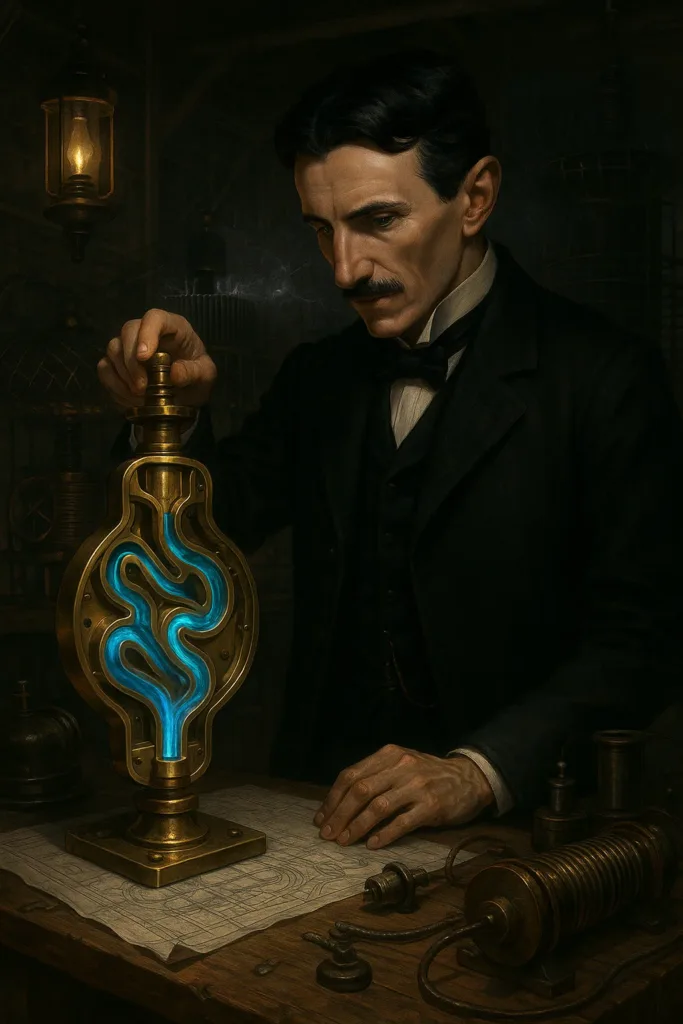A Return to Mechanical Innovation
After the financial failure of the Wardenclyffe Tower on Long Island, Nikola Tesla threw himself ever more into mechanical inventions. His ability to blend electrical engineering, mechanics, and fluid dynamics allowed him to develop unique concepts far ahead of their time.
The Check Valve with No Moving Parts – Tesla’s Valve
📜 US Patent 1,329,559 (1920), first presented in 1916
Conventional check valves stop back-flow with springs, membranes, or other moving elements, which leads to wear and energy loss.
Tesla’s radical solution employs clever channel geometry and laminar flow to direct fluid in only one direction—without any moving parts.
Modern applications
- Microfluidics and biomedical devices
- High-efficiency cooling systems for electronics
- Experimental use in rocket engines (under study by SpaceX, NASA)
Oscillating & Rotating Combustion Engines without Pistons
Tesla also explored engines that convert combustion energy directly into rotation—eliminating pistons and crankshafts. In effect, they prefigure the Wankel rotary engine but on Tesla’s own principles.
📜 US Patent 1,655,113 (1928) describes an “explosive rotary engine” in which combustion gases act directly on turbine blades, delivering continuous torque without the vibration of a conventional reciprocating engine.
Inspired later developments
- Pulse-jet and ramjet propulsion
- Alternative powerplants in aviation and rocketry
The Tesla Turbine Revisited
Covered in Part XII of our series, Tesla’s bladeless turbine still deserves mention. Based on boundary-layer (laminar) flow rather than blades, it remains an elegant engineering solution.
Contemporary uses
- High-efficiency geothermal and solar thermal plants
- Blood-pump designs that minimize cell damage
- Advanced kinetic-energy recovery systems
Other Mechanical Ideas Ahead of Their Time
- Air bearings – Tesla envisioned friction-free bearings supported by gas flow, the forerunner of today’s precision air-bearing systems.
- Hydrodynamic generators – concepts to harvest ocean currents and tides, anticipating modern tidal-power technology.
Conclusion: Why Tesla’s Mechanical Inventions Still Matter
Tesla viewed machinery through the lens of maximum energy efficiency and minimal friction. Although many of his concepts were ignored in his lifetime, they are experiencing a renaissance thanks to advances in materials and computational modeling. His philosophy of simplicity, efficiency, and elimination of unnecessary parts is more relevant than ever in the era of sustainable engineering and green energy.
Follow MilovanInnovation to keep exploring how Tesla’s spirit lives on in every modern engineering challenge!


Leave a Reply